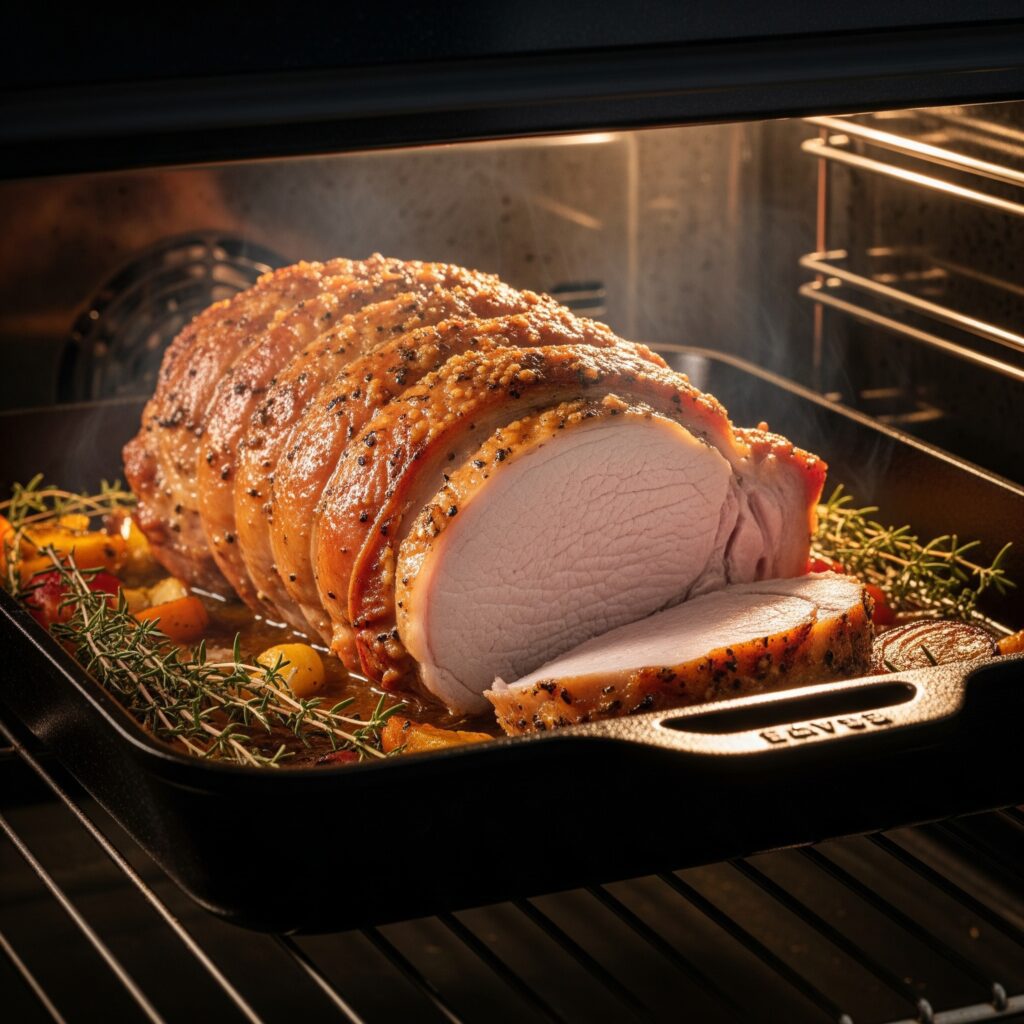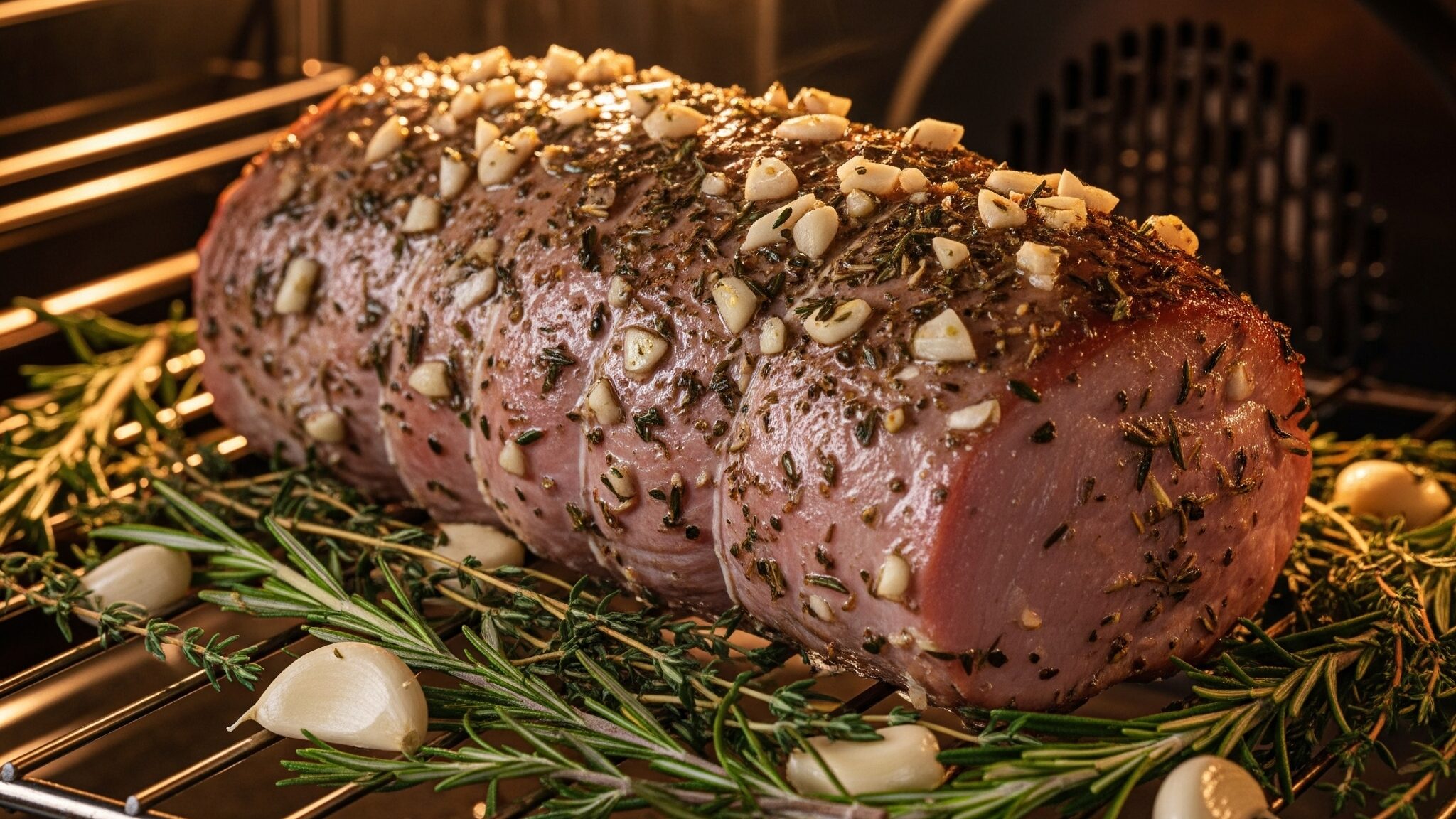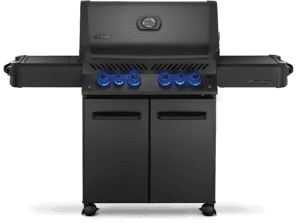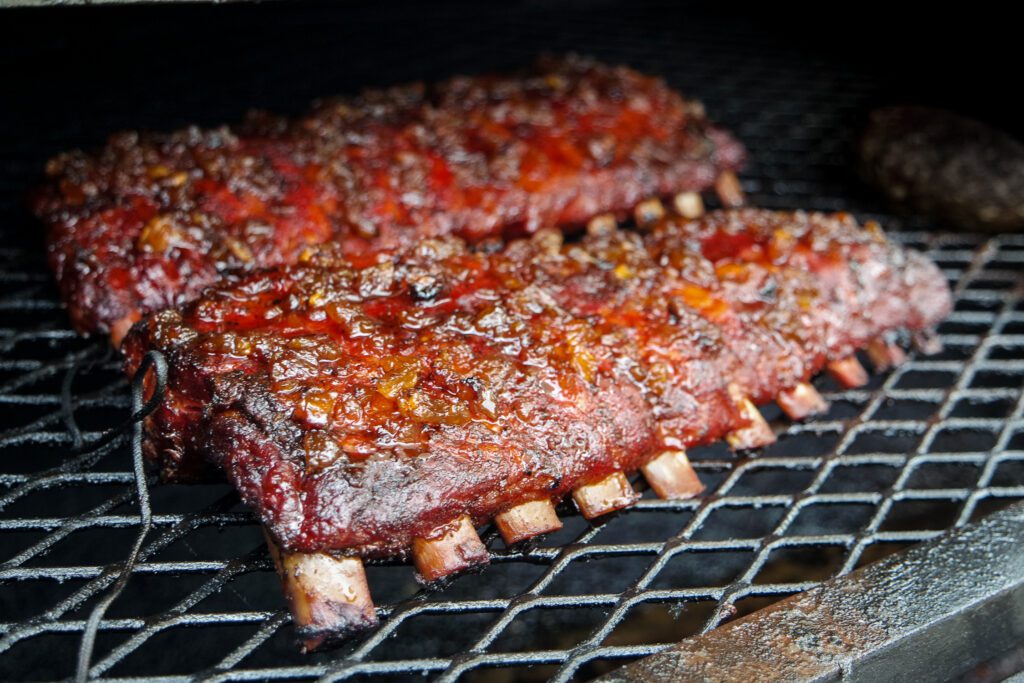How Long to Cook Pork Tenderloin in Oven at 350°F
Are you ready to elevate your pork tenderloin game? Look no further! In this quick guide, we’ll spill the beans on the secret to achieving a mouthwateringly delicious pork tenderloin straight from your oven. No more overcooked or dry meat – we’ve got you covered!
Picture this: a culinary masterpiece with a golden-brown crust enveloping a juicy and flavorful center that practically melts in your mouth. It’s not just a dream; it’s totally achievable with our foolproof method. By baking your pork tenderloin at 350°F in a preheated oven, you’ll unlock the key to perfection. With a cook time of your choice, whether grilling or baking, you can create this delicious dish.
But how long should you cook it for? Don’t worry, we won’t leave you guessing. We’ll show you how to use a meat thermometer to ensure your pork reaches the ideal internal temperature. Say goodbye to undercooked or overdone meals – it’s time to master the art of cooking pork tenderloin like a pro.
So grab your apron and let’s dive into the world of high-heat baking, room temperature meat, and perfectly cooked pork tenderloin that will have everyone asking for seconds. Get ready to impress with each succulent bite!
Cooking Time for Pork Tenderloin: Achieving Perfection
Cooking time plays a crucial role in achieving a tender and moist pork tenderloin. To ensure that your pork is cooked to perfection, it’s important to understand the recommended cooking time at 350°F and how to adjust it based on the size and thickness of the meat.
Recommended Cooking Time
When cooking pork tenderloin in the oven at 350°F, there are general guidelines you can follow for achieving delicious results. The average cooking time for pork tenderloin is approximately 20 minutes per pound. However, keep in mind that this is just an estimate, and factors such as the thickness of the meat can affect the actual cooking time.
To determine if your pork tenderloin is cooked to perfection, use a meat thermometer. Insert it into the thickest part of the meat without touching any bones or fat. The internal temperature should read 145°F (63°C) for medium-rare or 160°F (71°C) for medium doneness.
Adjusting Cooking Time
It’s essential to adjust the cooking time based on the size and thickness of your pork tenderloin. If you have a smaller piece of meat, it will require less time to cook compared to a larger one. Thinner cuts will cook faster than thicker ones.
Here’s how you can adjust the cooking time:
- For smaller pork tenderloins weighing around 1 pound or less, reduce the cooking time by approximately 5-10 minutes per pound.
- Conversely, if you have a larger perfect pork tenderloin weighing more than 1 pound, increase the cooking time by about 5-10 minutes per pound.
- Thinner cuts may need up to 5-10 minutes less cooking time than thicker cuts.
- Keep an eye on your pork while it cooks and use a meat thermometer to check its internal temperature regularly.
Remember that these adjustments are approximate and should serve as a starting point. It’s always best to rely on the meat thermometer to ensure your pork tenderloin is cooked to perfection.
Perfecting Your Pork Tenderloin
To achieve a tender and juicy pork tenderloin, it’s not just about the cooking time but also how you prepare and season it. Here are some tips for perfecting your pork:
- Marinate your pork tenderloin for at least 30 minutes before cooking to enhance its flavor and tenderness.
- Season the meat with your favorite herbs, spices, or marinades to add depth of flavor.
- Sear the pork tenderloin in a hot skillet before transferring it to the oven. This will help seal in the juices and create a delicious crust.
- Let the cooked pork rest for 5-10 minutes before slicing. This allows the juices to redistribute throughout the meat, resulting in a moist and succulent texture.
By following these guidelines and adjusting the cooking time based on your specific circumstances, you’ll be able to achieve a perfectly cooked pork tenderloin every time. So next time you’re preparing this delectable cut of meat, remember that patience and attention to detail are key ingredients for culinary success.
Oven-Baked Pork Tenderloin Recipe: Step-by-Step Guide
Are you craving a delicious and tender pork tenderloin? Look no further! Our step-by-step guide will walk you through the process of preparing, seasoning, and roasting a mouthwatering baked pork tenderloin in the oven. With just a few simple steps, you’ll be able to impress your family and friends with this delectable dish.
Preparing the Pork Tenderloin
To begin, gather all the necessary ingredients for your oven-baked pork tenderloin recipe. You will need:
- Pork tenderloin (1-2 pounds)
- Olive oil (2 tablespoons)
- Salt (1 teaspoon)
- Black pepper (1/2 teaspoon)
- Garlic powder (1/2 teaspoon)
- Paprika (1/2 teaspoon)
Start by preheating your oven to 350 degrees Fahrenheit. While the oven is heating up, prepare your pork tenderloin by trimming any excess fat or silver skin. This will ensure that your meat cooks evenly and results in a more tender final product.
Seasoning the Meat
Once your pork tenderloin is trimmed, it’s time to season it to perfection. In a small bowl, combine salt, black pepper, garlic powder, and paprika. Mix them together well before rubbing the spice blend all over the surface of the meat. This will create a flavorful crust when cooked.
Roasting in the Oven
Now that your pork tenderloin is seasoned, it’s ready to go into the oven. Place it on a baking sheet or in a roasting pan lined with aluminum foil for easy cleanup. Drizzle olive oil over the top of the meat to help keep it moist during cooking.
Slide the baking sheet or roasting pan into your preheated oven at 350 degrees Fahrenheit. Cook for approximately 20 minutes per pound of meat. For example, if you have a 1.5-pound pork tenderloin, it will take around 30 minutes to cook through.
Checking for Doneness
To ensure your pork tenderloin is cooked to perfection, use an instant-read thermometer to check the internal temperature. The desired temperature for fully cooked pork is 145 degrees Fahrenheit. Insert the thermometer into the thickest part of the meat without touching bone or fat.
Once your pork tenderloin reaches the appropriate temperature, remove it from the oven and let it rest for a few minutes before slicing. This resting period allows the juices to redistribute throughout the meat, resulting in a juicier and more flavorful final dish.
Serving Suggestions
There are countless ways to enjoy your oven-baked pork tenderloin. Here are a few serving suggestions:
- Slice the cooked pork and serve it alongside roasted vegetables for a complete meal.
- Thinly slice and use it as a filling for sandwiches or wraps.
- Serve with mashed potatoes and gravy for a comforting dinner option.
- Cut into medallions and serve over a bed of salad greens for a lighter meal.
With our comprehensive recipe guide, you now have all the tools necessary to master cooking a delicious baked pork tenderloin in your oven. Follow these simple steps, experiment with different seasonings if desired, and enjoy this mouthwatering dish that will surely impress everyone at your dining table!
Tips for Seasoning and Marinating Pork Tenderloin
Exploring Seasoning Options
Seasoning plays a crucial role in enhancing its flavor. By exploring different seasoning options, you can elevate your dish from ordinary to extraordinary. Here are some ideas to get you started:
- Classic Combination: A simple yet delicious way to season your pork tenderloin is by using a combination of kosher salt, black pepper, and garlic powder. This trio of flavors adds a savory kick that complements the natural taste of the meat.
- Herb Infusion: Experiment with herbs like rosemary, thyme, or sage to infuse your pork tenderloin with aromatic goodness. Rub a mixture of chopped herbs, kosher salt, and olive oil onto the meat before baking it in the oven at 350 degrees Fahrenheit.
- Spice It Up: For those who enjoy bolder flavors, consider adding spices such as paprika, cumin, or chili powder to your seasoning mix. These spices add depth and heat to your pork tenderloin.
Discovering Marinating Techniques
Marinating is another fantastic way to impart incredible taste into your pork tenderloin. The process involves soaking the meat in a flavorful liquid for an extended period before cooking it. Here are some marinating techniques worth trying:
- Citrus Burst: Create a zesty marinade by combining freshly squeezed citrus juices like orange or lime with minced garlic and a touch of honey. Let the pork tenderloin soak in this tangy mixture for at least two hours before sliding it into the oven.
- Asian Fusion: Give your dish an Asian twist by marinating the pork tenderloin in soy sauce, ginger, sesame oil, and a dash of sriracha sauce if you like it spicy. Allow the flavors to meld together by refrigerating the meat in this marinade for a minimum of three hours.
- Wine and Dine: If you prefer a more sophisticated flavor profile, consider marinating your pork tenderloin in red wine, balsamic vinegar, garlic, and fresh herbs like thyme or rosemary. The acidity of the wine helps tenderize the meat while infusing it with rich flavors.
Tips for Maximum Flavor
To ensure your pork tenderloin is bursting with flavor, here are some expert tips on how to properly season and marinate it:
- Pat Dry: Before applying any seasoning or marinade to your pork tenderloin, make sure to pat it dry with paper towels. Removing excess moisture allows the flavors to adhere better to the meat’s surface.
- Even Distribution: To achieve an even distribution of seasoning or marinade, rub it thoroughly into all sides of the pork tenderloin. This ensures that every bite is packed with deliciousness.
- Marinating Time: While marinating times can vary depending on personal preference and recipe instructions, aim for at least one hour to allow the flavors to penetrate the meat fully. For best results, marinate overnight in the refrigerator.
- Resting Period: After cooking your pork tenderloin in the oven at 350 degrees Fahrenheit, let it rest for about 5-10 minutes before slicing.
Side Dishes to Complement Your Baked Pork Tenderloin
Elevate your meal by pairing your baked pork tenderloins with delectable side dishes. Explore a variety of side dish options that perfectly complement oven-baked pork tenderloins. Discover creative ideas for sides that will take your baked pork tenderloins to the next level.
Finding the perfect side dish can make all the difference. With a juicy and flavorful pork tenderloin taking center stage on your dinner table, it’s essential to choose sides that enhance its taste and bring out its best qualities.
1. Roasted Vegetables
Roasting vegetables alongside your pork tenderloin is an excellent way to add color, flavor, and nutrients to your meal. Toss some seasonal vegetables like carrots, Brussels sprouts, and sweet potatoes in olive oil, sprinkle them with salt and pepper, and roast them in the same baking dish as your meat. The result is a medley of caramelized goodness that pairs perfectly with the succulent pork.
2. Herbed Potatoes
For a classic side dish that never disappoints, try serving herbed potatoes alongside your baked pork tenderloin. Cut baby potatoes into bite-sized pieces and toss them with olive oil, minced rosemary, garlic powder, salt, and pepper. Roast them until golden brown and crispy on the outside while remaining soft on the inside. The fragrant herbs combined with the hearty potatoes create a delightful contrast to the flavors of the meat.
3. Honey-Glazed Carrots
Add a touch of sweetness to your meal by preparing honey-glazed carrots as a side dish for your pork tenderloin. Slice fresh carrots into sticks or coins and sauté them in butter until slightly softened. Drizzle honey over the carrots along with a sprinkle of paprika or cinnamon for added depth of flavor. Cook until the carrots are tender and caramelized, creating a harmonious combination of savory and sweet.
4. Quinoa Salad
For a lighter side dish option that still packs a punch in terms of taste and nutrition, consider serving a quinoa salad alongside your pork tenderloin. Cook quinoa according to package instructions and let it cool. Mix it with chopped herbs like parsley or cilantro, diced cucumbers, cherry tomatoes, and crumbled feta cheese. Dress the salad with lemon juice, olive oil, salt, and pepper for a refreshing accompaniment to the rich flavors of the meat.
5. Brussel Sprouts with Bacon
If you’re looking for a side dish that adds both crunch and savory goodness to your meal, try roasting Brussels sprouts with bacon. Trim the sprouts and cut them in half before tossing them in olive oil, salt, pepper, and minced garlic. Arrange them on a baking sheet along with strips of bacon and roast until the Brussels sprouts are tender yet slightly crispy at the edges. The smoky flavor of the bacon combined with the earthiness of the sprouts creates an irresistible pairing.
Proper Storage Tips for Leftover Pork Tenderloin
Leftover pork tenderloin can be a delicious treat, but it’s important to store it properly to maintain its freshness and flavor. Whether you’re planning to enjoy it the next day or save it for later in the week, here are some expert tips on how to store leftover pork tenderloin.
Storing Leftover Pork Tenderloin
To keep your leftover pork tenderloin fresh and safe to eat, follow these storage guidelines:
- Refrigerate promptly: After enjoying your meal, make sure to refrigerate any leftover pork tenderloin within two hours of cooking. Leaving it out at room temperature for too long can lead to bacterial growth and spoilage.
- Wrap it up: Transfer the leftover pork tenderloin into an airtight container or wrap it tightly with plastic wrap. This will help prevent air from reaching the meat and causing it to dry out.
- Label and date: To avoid confusion later on, label the container with the date when you stored the leftovers. This way, you can easily keep track of how long they have been in the refrigerator.
- Store in the fridge: Place the wrapped or containerized leftover pork tenderloin in the refrigerator’s main compartment rather than on the door where temperatures fluctuate more frequently.
Reheating Leftover Pork Tenderloin
When you’re ready to enjoy your leftover pork tenderloin again, follow these reheating methods to ensure it stays moist and flavorful:
- Oven method: Preheat your oven to 350°F (175°C). Place the leftover pork tenderloin on a baking sheet lined with aluminum foil or parchment paper. Cover loosely with foil and bake for about 15 minutes or until heated through.
- Stovetop method: Heat a skillet over medium heat and add a small amount of oil or butter. Sear the leftover pork tenderloin slices on each side for a few minutes until heated thoroughly.
- Microwave method: If you’re short on time, you can use the microwave to reheat your leftover pork tenderloin. Place the slices on a microwave-safe plate and cover them with a damp paper towel. Heat in 30-second intervals, checking for doneness after each interval.
Repurposing Leftover Pork Tenderloin
Don’t let your leftover pork tenderloin go to waste! Here are some creative ideas for repurposing it into delicious meals or sandwiches:
- Pork stir-fry: Slice the leftover pork tenderloin into thin strips and use it as a protein in a flavorful stir-fry with vegetables and your choice of sauce.
- Pork tacos: Shred the cooked pork tenderloin and use it as filling for tasty tacos. Top with salsa, cheese, and any other desired toppings.
- Pork sandwiches: Thinly slice the leftover pork tenderloin and layer it onto bread or rolls with your favorite condiments and toppings for a satisfying sandwich.
- Pork fried rice: Chop up the cooked pork tenderloin into small pieces and incorporate it into homemade fried rice along with vegetables, rice, soy sauce, and scrambled eggs.
Understanding the Difference: Pork Loin vs. Pork Tenderloin
It’s essential to understand the differences between various cuts of meat. Let’s dive in and explore the variations in taste, texture, and cooking methods between these two cuts of meat.
Differentiating Between Pork Loin and Pork Tenderloin
Pork loin and pork tenderloin may sound similar, but they are distinct cuts with unique characteristics. The most significant difference lies in their location within the pig’s body. The pork loin is taken from the back of the animal, while the tenderloin is found beneath the backbone.
The pork loin is a larger cut that offers more versatility in cooking. It has a rich flavor and a slightly firmer texture compared to its counterpart. On the other hand, pork tenderloin is leaner and more delicate in taste and tenderness.
Cooking Methods for Each Cut
Due to their varying textures, pork loin and tenderloin require different cooking techniques to bring out their best flavors. When preparing a succulent pork loin dish, slow roasting or grilling at moderate temperatures works wonders. This allows enough time for the fat marbling within the meat to render down while keeping it juicy on the inside.
For those opting for a quick yet flavorful meal using pork tenderloin, high-heat methods like searing or stir-frying are ideal. Because it lacks excess fat content compared to pork loin, overcooking can easily dry out this cut. Therefore, it’s crucial to monitor its internal temperature carefully.
Best Suited Dishes for Each Cut
Now that we’ve covered how to cook each cut let’s explore which dishes work best with either pork loin or tenderloin:
- Pork Loin:
- Traditional Sunday roast: Seasoned with herbs and spices, slow-roasted pork loin makes a delectable centerpiece for a hearty family meal.
- Stuffed pork loin: Fill the cavity of the loin with a flavorful stuffing mixture before roasting to create an impressive dish bursting with complementary flavors.
- Pork Tenderloin:
- Teriyaki stir-fry: Slice tenderloin into thin strips and quickly cook in a hot wok with colorful vegetables and a tangy teriyaki sauce.
- Grilled medallions: Cut the tenderloin into thick slices, marinate, and grill them to perfection for juicy medallions that pair well with summer salads.
By understanding the differences between pork loin and pork tenderloin, you can confidently choose the right cut for your culinary creations. Whether you’re aiming for robust flavors or delicate tenderness, these different cuts offer exciting possibilities in your kitchen adventures. So go ahead and explore their unique qualities to elevate your next pork dish!
Conclusion: Mastering the Art of Cooking Pork Tenderloin
Congratulations! You are now equipped with the knowledge to master the art of cooking pork tenderloin. By understanding the key points discussed in this guide, you can confidently prepare a delicious and perfectly cooked pork tenderloin every time.
Firstly, we explored the importance of achieving the perfect cooking time for pork tenderloin. By cooking it in the oven at 350 degrees Fahrenheit, you can ensure a juicy and tender result. Remember to use a meat thermometer to check for an internal temperature of 145-160 degrees Fahrenheit.
Next, we provided you with a step-by-step guide for an oven-baked pork tenderloin recipe. From seasoning to searing and roasting, each step contributes to enhancing the flavor and texture of your dish. Follow these instructions closely for mouthwatering results.
Seasoning and marinating play crucial roles in elevating the taste of your pork tenderloin. We shared valuable tips on how to add depth and complexity by using various herbs, spices, and marinades. Experiment with different combinations to find your favorite flavors.
To complete your meal, we suggested some delectable side dishes that pair perfectly with baked pork tenderloin. Whether it’s roasted vegetables or creamy mashed potatoes, these accompaniments will enhance your dining experience.
Proper storage is essential when dealing with leftover pork tenderloin. We provided useful tips on how to store it safely in order to maintain its quality and prevent any foodborne illnesses. Don’t let those leftovers go to waste!
Lastly, we clarified the difference between pork loin and pork tenderloin so that you can make informed choices when purchasing meat for your recipes.
Now that you have all this knowledge about cooking pork tenderloin, it’s time for you to put it into practice! Impress your friends and family with your newfound culinary skills by preparing a succulent pork tenderloin that will leave them craving for more.
Remember, practice makes perfect, so don’t be discouraged if your first attempt isn’t flawless. Keep experimenting, honing your skills, and exploring new flavors. Before you know it, you’ll become a pork tenderloin expert!
So what are you waiting for? Get into the kitchen and start cooking up a storm with pork tenderloin as your main star. Enjoy the process and savor the delicious results!
How Long to Cook Pork Loin in Oven at 400°F | Perfect Moistness!
Perfectly Cooked Air Fryer Pork Tenderloin| How Long to Cook Pork Tenderloin in Air Fryer 2025
Tenderloin on Pellet Grill| How Long to Cook Pork Tenderloin on Pellet Grill at 350°F
FAQs
Q: Can I cook pork tenderloin at a higher temperature?
A: While it is possible to cook pork tenderloin at a higher temperature, we recommend sticking to 350 degrees Fahrenheit for optimal results. Higher temperatures may cause the meat to dry out or become overcooked.
Q: How can I tell if my pork tenderloin is cooked properly?
A: The best way to determine if your pork tenderloin is cooked properly is by using a meat thermometer. Insert it into the thickest part of the meat – when the internal temperature reaches 145-160 degrees Fahrenheit, it is ready to be enjoyed.
Q: Should I let my pork tenderloin rest before slicing?
A: Yes! Allowing your pork tenderloin to rest for about 5 minutes after cooking helps retain its juices and ensures even distribution throughout the meat. This step contributes to a more flavorful and succulent result.
Q: Can I freeze leftover cooked pork tenderloin?
A: Absolutely! If you have leftover cooked pork tenderloin, you can freeze it in an airtight container or freezer bag for future use. Just make sure to label it with the date and consume within three months for best quality.
Q: What are some alternative seasonings for pork tenderloin?
A: If you’re looking to switch things up, try experimenting with different seasonings such as garlic powder, paprika, cumin, or even a touch of honey for a hint of sweetness. The possibilities are endless, so don’t be afraid to get creative with your flavors!




0 Comments